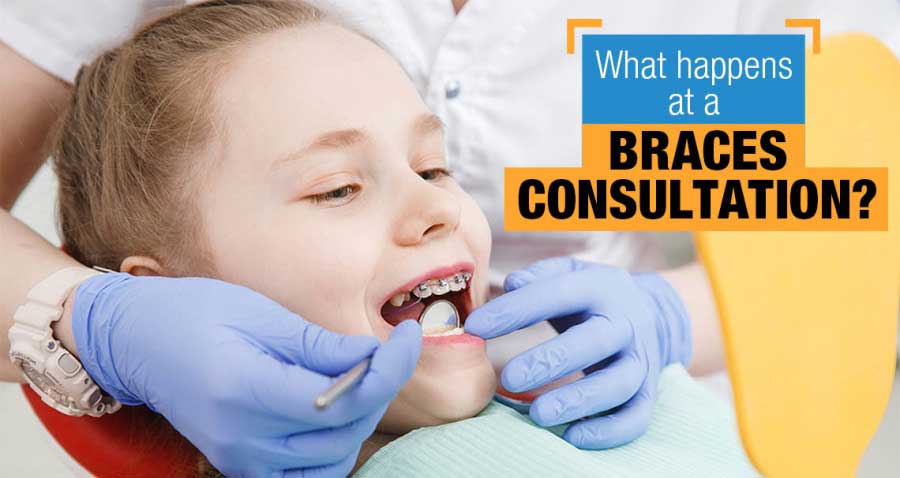Your Guide to Cumming Invisalign: Straightening Teeth with Style and Convenience
Your Guide to Cumming Invisalign: Straightening Teeth with Style and Convenience
Blog Article
Comprehensive Overview to Orthodontics Treatments for Fixing Oral Misalignments
In the realm of orthodontics, the journey to achieving a perfectly aligned smile includes a myriad of procedures customized to fix dental imbalances. From standard braces to unseen aligners and even surgical options, the field of orthodontics offers a series of remedies to deal with varying levels of oral abnormalities. Understanding the ins and outs of each procedure, including their systems, advantages, and potential downsides, is vital in making informed choices regarding one's orthodontic treatment. As we browse through the extensive guide to orthodontic treatments for remedying oral imbalances, the intricate information of each technique will certainly unravel, losing light on the course towards a unified and functional dental positioning.
Orthodontic Procedures Introduction

In addition to clear aligners and conventional dental braces, orthodontists might additionally advise various other treatments like headgear, palatal expanders, or retainers to resolve certain positioning problems (braces). These procedures are tailored per person's unique requirements and might involve a mix of treatments to attain the desired results. Normal adjustments and surveillance are important parts of orthodontic treatment to make certain progression is on track and to make any required alterations in the process. By going through orthodontic procedures, individuals can not just achieve a straighter smile but also improve their overall oral wellness and feature.
Typical Braces: Exactly How They Work
When taking into consideration orthodontic therapies for dental imbalances, conventional braces stand apart as a tried and true method for fixing teeth placing. Standard braces are composed of braces, cables, and bands that collaborate to apply constant pressure on the teeth, slowly relocating them right into the desired positioning. The braces are connected to the teeth making use of an unique adhesive, and the cords are threaded with the braces. By readjusting the tension of the cords, orthodontists can manage the instructions and pressure applied to each tooth, assisting them right into appropriate positioning over time.
As pressure is used to the teeth with the dental braces, the bone surrounding the teeth is reshaped to sustain the new tooth positions. Patients will certainly need normal adjustments at the orthodontist's office to make certain the dental braces proceed to apply the right stress for effective teeth activity.
Invisible Aligners: Cons and pros
Undetectable aligners provide a hassle-free and discreet choice to traditional braces for fixing oral imbalances. These clear, custom-made trays are essentially invisible when used, making them an appealing option for individuals seeking an extra cosmetically pleasing orthodontic therapy. Among the primary advantages of unnoticeable aligners is their removability, permitting simpler upkeep of dental hygiene compared to standard braces. Patients can remove the aligners before eating or cleaning their teeth, decreasing the threat of food getting embeded the home appliance and simplifying the cleaning procedure.

Surgical Orthodontic Options
Surgical treatments in orthodontics existing best periodontist practical choices for attending to intricate dental misalignments that may not be properly resolved through standard orthodontic therapies. While typical dental braces and unnoticeable aligners Source can remedy several orthodontic problems, certain situations require medical treatment to attain optimal outcomes. Surgical orthodontic options are normally recommended for serious malocclusions, considerable jaw disparities, and instances where the underlying bone structure needs adjustment to achieve proper placement.
One usual medical orthodontic treatment is orthognathic surgical treatment, which involves rearranging the jaws to fix useful issues such as problem chewing or talking. This surgical procedure is typically done in cooperation with an orthodontist that helps straighten the teeth prior to and after the procedure. Surgical orthodontics might likewise entail procedures to subject affected teeth, get rid of excess gum tissue, or improve the jawbone to develop a more harmonious facial profile.
Before taking into consideration surgical orthodontic options, patients go through a thorough evaluation to determine the requirement and prospective advantages of such interventions. cumming orthodontist. While surgical procedure might seem complicated, it can considerably boost both the feature and aesthetic appeals of the smile in situations where traditional orthodontic therapies fail
Retainers and Post-Treatment Treatment

Failure to conform with post-treatment care guidelines can result in relapse, where the teeth progressively relocate look here back towards their original settings. Constant retainer wear, excellent oral hygiene, and normal oral check-ups are important for maintaining the outcomes accomplished via orthodontic surgical procedure and guaranteeing the long-lasting stability of the dealt with dental positioning.
Conclusion
In final thought, orthodontic treatments supply different choices for remedying oral imbalances. Surgical orthodontic options are readily available for a lot more extreme imbalances. Generally, orthodontic treatments can effectively improve dental health and aesthetic appearance.
As we browse with the detailed overview to orthodontic procedures for fixing dental misalignments, the detailed information of each method will certainly unravel, shedding light on the course towards a practical and harmonious oral positioning. - cumming braces
One of the most usual orthodontic therapies is the usage of dental braces, which are composed of metal brackets and cables that apply mild pressure to progressively change teeth into the wanted position.When considering orthodontic treatments for oral misalignments, conventional braces stand out as a tried and true approach for correcting teeth positioning. Furthermore, invisible aligners may not be suitable for complicated orthodontic issues that require more significant teeth activity, as they are generally suggested for moderate to modest situations. Retainers are tailor-made orthodontic tools created to hold teeth in their fixed positions after the conclusion of orthodontic therapy.
Report this page